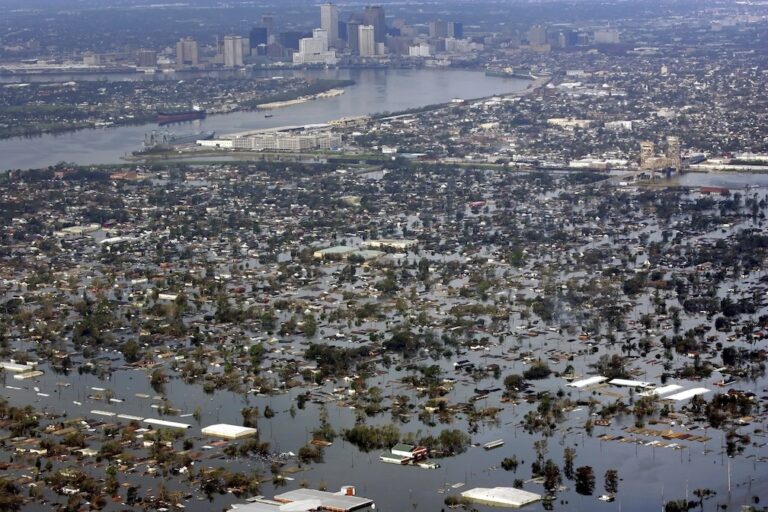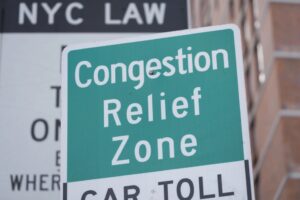Monstrous hurricanes Helene and Milton caused so much complex havoc that damages are still being added up, but government and private experts say they will likely join the infamous ranks of Katrina, Sandy and Harvey as super costly $50-billion-plus killers.
Making that even more painful is that most of the damage — 95% or more in Helene’s case — was not insured, putting victims in a deeper financial hole.
Storm deaths have been dropping over time, although Helene was an exception. But even adjusted for inflation, damages from intense storms are skyrocketing because people are building in harm’s way, rebuilding costs are rising faster than inflation, and human-caused climate change are making storms stronger and wetter, experts in different fields said.
“Today’s storms, today’s events are simply vastly different from yesterday’s events. One of the things that we’re seeing is the energy content that these systems can retain is significantly greater than it used to be,” said John Dickson, president of Aon Edge Insurance Agency, which specializes in flood coverage. “The weather seems to be, in many cases, moving faster than we as a society are able to keep pace with it.”
In the last 45 years, and adjusted for inflation, the National Oceanic and Atmospheric Administration has counted 396 weather disasters that caused at least $1 billion in damage. Sixty-three of those were hurricanes or tropical storms.
The $50 billion mark for direct losses is a threshold that differentiates “truly historic events,” said Adam Smith, the economist and meteorologist who runs the list out of NOAA’s National Center for Environmental Information in Helene-hit Asheville, North Carolina.
Only eight hurricanes reached that threshold. Smith said he thought Milton and Helene have “a very good shot” of joining that list.
The first $50 billion hurricane was Andrew in 1992. The U.S. went 13 more years before Katrina topped the damages chart, then seven years until the third costly whopper, Sandy. Helene and Milton would make seven in the last seven years.
There’s three categories of damage: insured damage, uninsured damage and total economic cost. Many risk and insurance firms only estimate insured losses.
Homeowner insurance usually covers wind damage, but not flood. Special insurance has to be bought for that. Flood insurance coverage rates vary by region and storms differ on whether they cause more wind or water damage. Helene was mostly water damage, which is less likely to be covered, while Milton had a good chunk of wind damage.
Of the top 10 costliest hurricanes as compiled by insurance giant Swiss Re — not including Helene or Milton yet — insured damage is about 44% of total costs.
With Helene, Swiss Re said less than 2% of Georgia households have federal flood insurance, with North Carolina and South Carolina at 3% and 9%. In North Carolina’s Buncombe County, where more than 57 people died from Helene’s flooding, less than 1% of the homes are covered by federal flood insurance, the agency said.
Karen Clark and Company, a disaster modeling firm that uses computer simulations superimposed on storm and insurance data, wouldn’t give total damage estimates for the storms. But the company figured insured losses alone were $36 billion for Milton and $6.4 billion for Helene
“The economic losses are going up because we’re putting more infrastructure and housing in harm’s way,” said University of South Carolina’s Susan Cutter, co-director of the Hazards Vulnerability and Resilience Institute, who added that climate change also plays a role. “Human losses and deaths are going down because people are being a little bit more vigilant about paying attention to preparedness and getting out of harm’s way.”
Much of the damage is because of flooding. Studies show that hurricanes are getting wetter because of the buildup of heat-trapping gases from the burning of coal, oil and gas. Basic physics dictates that clouds hold 4% more moisture for every degree Fahrenheit (7% for every degree Celsius), and that falls as rain.
“There is scientific agreement that floods and flooding from these hurricanes is becoming more frequent and more severe. So it is likely that we’re going to be seeing a higher frequency of storms like Helene in the future,” said Karen Clark, who founded her namesake firm. “It’s not really an insurance issue because it’s not privately insured. This is really a societal issue and political question. How do we want to deal with this?”
Clark and several of the experts said it’s time for society to think about where it builds, where it lives and if it should just leave dangerous areas and not rebuild, a concept called “managed retreat.”
“At what point do you as an individual continue to build, rebuild, rebuild and rebuild versus saying ‘OK, I’ve had enough’,” Cutter said.
And when it comes to flood insurance, many homeowners in risky areas find it’s too expensive, so they don’t buy it, Clark said. But when a storm hits them, she said “all of us as taxpayers, we’re going to pay it because we know there are going to be federal dollars coming into those areas to help people rebuild. So all taxpayers, we’re actually paying for people to live in risky areas.”
The Associated Press is an independent global news organization dedicated to factual reporting. Founded in 1846, AP today remains the most trusted source of fast, accurate, unbiased news in all formats and the essential provider of the technology and services vital to the news business. The Trucker Media Group is subscriber of The Associated Press has been granted the license to use this content on TheTrucker.com and The Trucker newspaper in accordance with its Content License Agreement with The Associated Press.







